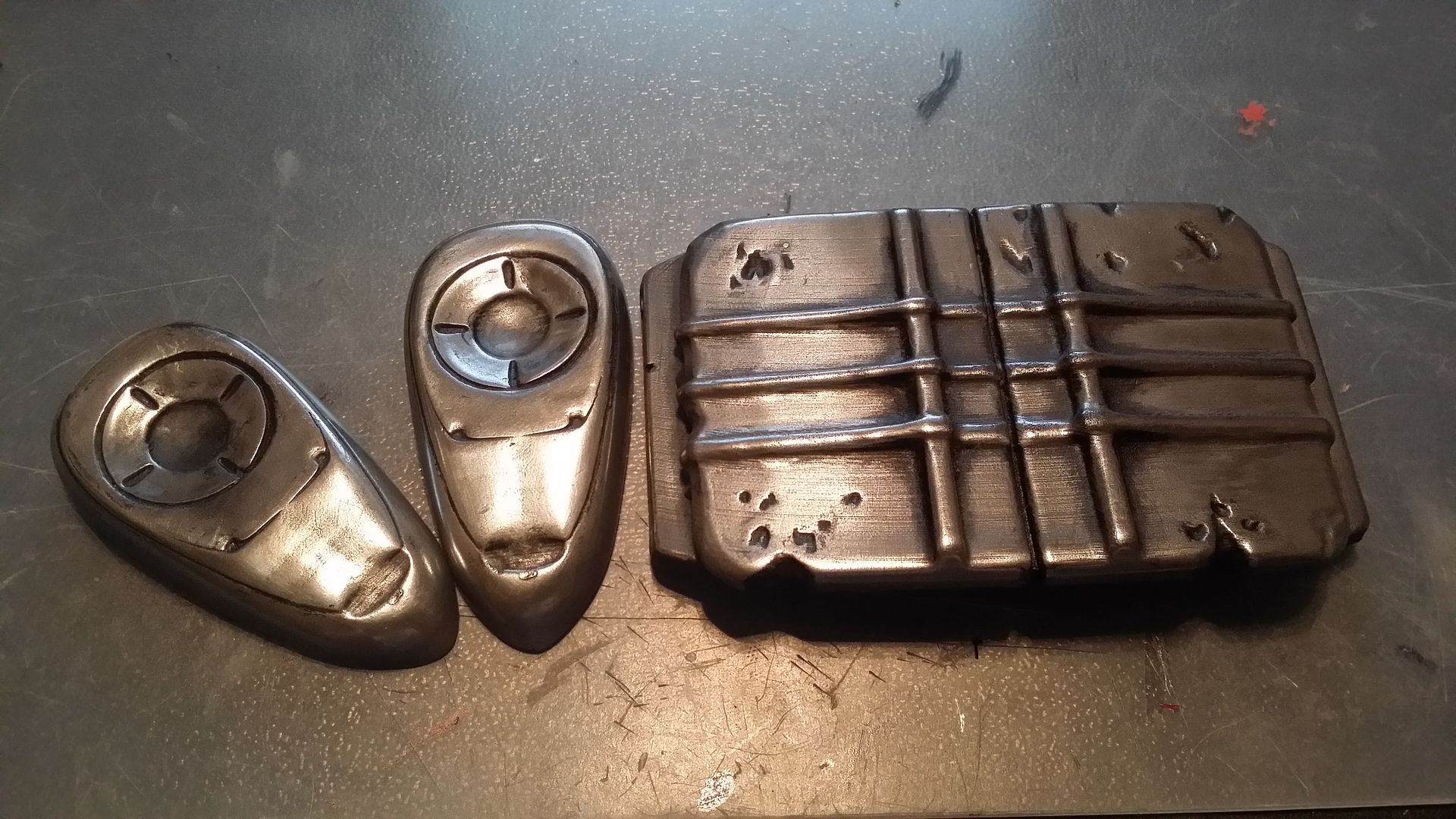Ein
Sr Member
My method so far has been as follows:
With the mold clean and open, dust it down with metallic powder; in this case I'm using -200 mesh aluminum powder from Smooth-On. Get a good coating, tap the excess back into the container, brush the unnecessary powder off the non-model parts of the mold with a soft brush.
Mix some resin - the last batch I did I used Onyx (Slow) from Smooth-On, but previously I have tried using clear resins with comparable results. Do a 1:1:1 mixture of Part A to Part B to Aluminum Powder, mix thoroughly. I inject the resin into my model with a large-gauge syringe because it's a smaller mold and the syringe allows me to put a bit of pressure behind the resin to ensure it fills the mold thoroughly. Once I'm certain the mold is full, I throw it in a pressure pot at 40-60 PSI to crush any air bubbles out of solution.
Pop the model out, rub it down with some mineral spirits, clean up some of the excess garbage with a knife. All good so far! Model looks pretty great, but it's a dull grey at this point.
This is where it falls apart for me. I can try using steel wool, or high-grit sandpaper, or polishing compounds on cloth... end result is always the same. I end up with a 'mottled' metallic finish, rather than something that looks more consistently metal. Here's an example:


Ignore the slight casting defects on that for the moment. What is causing this? What am I doing wrong? How do I get a more consistent finish?
With the mold clean and open, dust it down with metallic powder; in this case I'm using -200 mesh aluminum powder from Smooth-On. Get a good coating, tap the excess back into the container, brush the unnecessary powder off the non-model parts of the mold with a soft brush.
Mix some resin - the last batch I did I used Onyx (Slow) from Smooth-On, but previously I have tried using clear resins with comparable results. Do a 1:1:1 mixture of Part A to Part B to Aluminum Powder, mix thoroughly. I inject the resin into my model with a large-gauge syringe because it's a smaller mold and the syringe allows me to put a bit of pressure behind the resin to ensure it fills the mold thoroughly. Once I'm certain the mold is full, I throw it in a pressure pot at 40-60 PSI to crush any air bubbles out of solution.
Pop the model out, rub it down with some mineral spirits, clean up some of the excess garbage with a knife. All good so far! Model looks pretty great, but it's a dull grey at this point.
This is where it falls apart for me. I can try using steel wool, or high-grit sandpaper, or polishing compounds on cloth... end result is always the same. I end up with a 'mottled' metallic finish, rather than something that looks more consistently metal. Here's an example:


Ignore the slight casting defects on that for the moment. What is causing this? What am I doing wrong? How do I get a more consistent finish?

